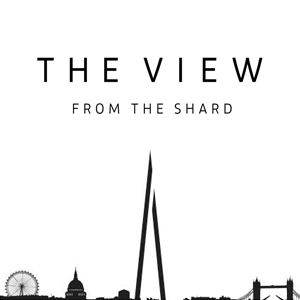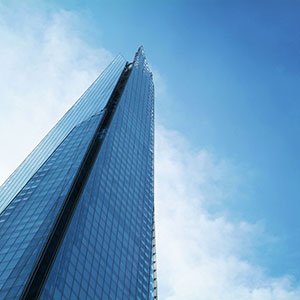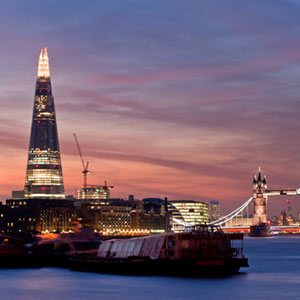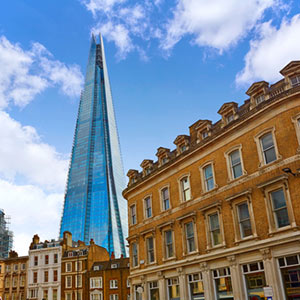In a Nutshell
Britton McGrath Associates were first approached by Sellar Property Group back in 2003 – planning permission had been granted for a tall building, then known as London Bridge Tower, with the Section 106 requirement for public access to the top of the tower but funding had not yet been secured. We worked with the development team to define the concept for the publicly accessible offer and undertake the initial feasibility work including demand forecasting, detailed capacity analysis and business planning. Once financing was in place, we developed the detailed business plan and liaised with the lead architect as well as key internal and external stakeholders to ensure that the plans for the observation deck were in line with those for the building overall. We reviewed the potential strategic operating routes and helped the development team execute the preferred option to operate the attraction in-house. After assisting in the recruitment process, we then worked closely with the CEO right through until the highly successful launch of the View from the Shard in February 2013. Our responsibilities during the delivery phase included: interpretive concept development; operating strategy; business planning; budgeting (capital investment); recruiting key positions within the management team; tendering for the admissions system; the development of commercial relationships; website development; branding; market testing and launch strategy.
The Full Story
The Shard at London Bridge was designed by renowned architect Renzo Piano and developed by Sellar Property Group (SPG). The vision was to create a vertical town – a truly mixed-use destination of shops, offices, restaurants and public spaces including public viewing galleries at 800 ft (244m) – the highest in Europe and almost twice as high as the London Eye.
Having exited the Tussauds Group, where Jill Britton and Nancy McGrath were part of the core team that developed and delivered the London Eye, Britton McGrath Associates were introduced to SPG and first became involved with the early plans for a viewing gallery in December 2003. Working closely with the development team and architects, the Renzo Piano Building Workshop, we were responsible for the initial feasibility study and for presenting the subsequent business case to potential investors.
We were involved from these early discussions right through until the highly successful launch of the View from Shard in February 2013 and over the course of the project, our responsibilities included: concept development; capacity modelling; operating strategy; business planning; budgeting (specifically the overall capital investment); recruiting key positions within the management team; tendering for the admissions system; the development of commercial relationships; website development; branding; market testing and launch strategy.
Our first challenge was one of managing expectations. It became clear early on that financial expectations were being driven by property norms and a key part of our role was optimising commercial return whilst delivering against visitor and brand expectations. The provision of ‘public access’ was a condition of planning consent. Operating a visitor attraction which took up valuable floorspace and granting access to the general public within a prestigious development that was being sold to corporate and private tenants on an exclusive basis, was not part of the developer’s original plans, nor, by their own admission, one of their existing skillsets.
Using our experience of operating leading visitor attractions in London, most notably the London Eye which had opened to critical acclaim just a few years previously, as well as other London attractions such as Madame Tussauds, we were able to use an evidence-based approach to identify the key drivers and barriers for success for the viewing gallery. We identified where the proposed scheme would need to be revisited if the ambitions for the viewing gallery were to be achievable – examples of this include the allocation of an admissions/arrival space and back of house provision for staff. The fact that we were invited back to undertake further work on the project was testament to the robust ‘healthy debate’ that we developed with the client team.
At the outset, we quickly realised that we needed to turn the normal ‘rule’ of business planning on its head. Rather than starting with the concept and market demand, we needed first to consider capacity and then work back from there in terms of the concept that could be delivered within the constraints of the building and what the demand for this might be. We developed a sophisticated capacity-led model that identified where the capacity constraints and limiting factors were – lifting, security and fire regs. The model allowed us to run any number of volume scenarios and to see what the impact of opening hours, dwell times, security personnel etc would or could have on utilisation. The model and its findings were used as the basis for presentations to a number of banks and other potential investors as well as stakeholders such as Network Rail who had a vested interest in the smooth operation of a visitor attraction located within one of London’s busiest railway stations.
Construction started in 2009 after the project was financed by a five-way investor consortium comprising: Qatar National Bank, Qatar Islamic Bank, Barwa International, Q-Invest and Sellar Property Group.
During this next stage, we advised the client team on a number of operating strategies ranging from outsourcing the running of the visitor attraction as a separate entity to a third-party, through to operating it in-house. As well as providing a thorough analysis of the market and a review of potential operators in the UK and from overseas, we also brokered introductory meetings between key industry players and the client team and acted as the facilitator for negotiations between them. Ultimately the client team decided that for financial, branding and control reasons, the preferred route was to operate the attraction in-house. We then worked with Executive Recruitment agencies and oversaw the recruitment process which culminated in the hiring of a Chief Executive who had previously run the Sears [now Willis] Tower in Chicago and who had been instrumental in launching the Burj Khalifa in Dubai.
The new CEO came on board in summer 2011 and from that time until the launch in February 2013, our role shifted to one of in-house client representative, working alongside the CEO helping to set up and deliver the project. As well as on-going financial and business planning, this involved responsibility for: hiring key members of the management team; briefing and commissioning systems; liaising with key stakeholders and working alongside the architects to deliver the concept.
Advance ticketing was becoming more commonplace within the industry, spearheaded by the London Eye in 1999/2000 – a project with which we were heavily involved as industry operators working for the Tussauds Group at the time. Due to its capacity constraints as well as other operational considerations, the View from the Shard was however the first attraction to operate on a fully timed, advance ticket basis. We worked to define the user requirements for the system; identified potential suppliers; wrote the brief and managed the tender process. We then worked with the appointed supplier until the Marketing Director was on board at which point, we were able to hand over the project to her to execute.
Early on we had identified photography as a key revenue generating opportunity for the View from the Shard. Based on our experience as operators at attractions such as Madame Tussauds and Alton Towers, we knew that the most commercially attractive way of doing this would be to outsource the operation to an industry specialist. Working in collaboration with the architect, we developed the brief and managed the tender process in order to identify the preferred supplier based on both quantitative and qualitative criteria.
Have worked for six months as a team of just three (the CEO, his PA and us!), the time came to start to start bringing on board the key management positions who would then cascade down to create and hire their own departments. We were directly involved with the appointments of the Operations Director, the Operations Manager and the Marketing Director.
Towards the end of 2011, we were ready to test the proposition to validate the volume estimates, test price sensitivity and get feedback on proposed names for the viewing galleries. We were responsible for managing this process through from developing the brief, managing the tender process and working with the research agency to define the research parameters, develop the stimulus material and refine the questionnaire.
Working with the research team, we used the Van Westondorp price sensitivity model to identify the optimum price point which would deliver a level of demand in line with the capacity limitations as well as matching the aspirations for the quality of experience delivered to visitors and optimise the income potential.
We were involved right up until the successful launch of the attraction in January/February 2013 when we fully handed over to the in-house team who took up the reigns and operated the attraction within the strategic and operational framework that had been put in place.
Following its incredibly successful launch and the inevitable waning of the ‘novelty effect’, The View from the Shard is now entering the next phase of its development moving towards an events venue.






